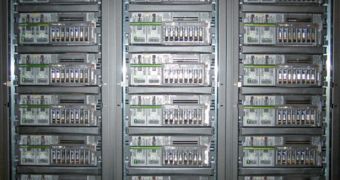Scientists at Rice University, alongside colleagues from the Texas Medical Center, are the winners of a $7.6-million award from IBM. The electronics giant will donate an advanced supercomputer to the two institutions, for setting up a biomedical research collaboration to investigate the development of cancer, and possible therapies against the devastating disease. The machine, a part of the high-performance computing (HPC) initiative, will also be used to promote research related to conditions such as HIV/AIDS, as well as other complex afflictions, which produce intricate changes in the human body. These changes are so difficult to keep track of that only a supercomputer can do it, experts say.
The IBM Shared University Research (SUR) award consists of a POWER7-based supercomputer. In addition to the machine itself, Rice University scientists were also awarded related HPC software, services, as well as life sciences expertise from IBM. The collaboration has been dubbed BlueBioU, and is touted to be a wonderful opportunity for biomedical experts from TMC, IBM and Rice to come together, and conduct valuable research in some of the world's most devastating and widespread diseases. This type of studies requires a lot of computing power, as well as intensive memory capabilities, and the new computer, the first featuring POWER7 microprocessors, has them both.
Some of its most demanding tasks will include simulating the folding of proteins, modeling the chemical configuration of new drugs, sequencing genetic materials, as well as simulating how tissues interact at a molecular level. These problems quickly become too intensive for average computers, and they are generally recognized for needing ultra-advanced computational technology in developing accurate conclusions. According to the IBM team, BlueBioU is capable of 18.8 trillion floating point calculations per second, or about 18.8 teraflops, which means that it is equally powerful as all the other supercomputers at Rice combined.
“Our vision is to facilitate collaboration among researchers and among institutions by providing a world-class computing resource that's well-suited to a range of bioscience applications,” explains the Rice vice provost for information technology, Kamran Khan. He is also one of the co-leaders for the new collaborative project. “It's exciting to have the world's first POWER7 clusters here at Rice. The productivity and performance benefits of the POWER7 platform are well-aligned with Rice's future directions for research computing, as well as our ultimate goal of working with the medical center to enhance treatment options and find new cures for patients,” adds the Rice E.D. Butcher professor of computer science, and of electrical and computer engineering, Vivek Sarkar, also a co-leader on the project.

 14 DAY TRIAL //
14 DAY TRIAL //